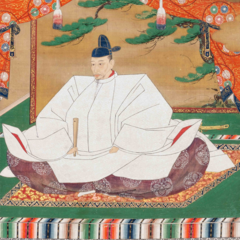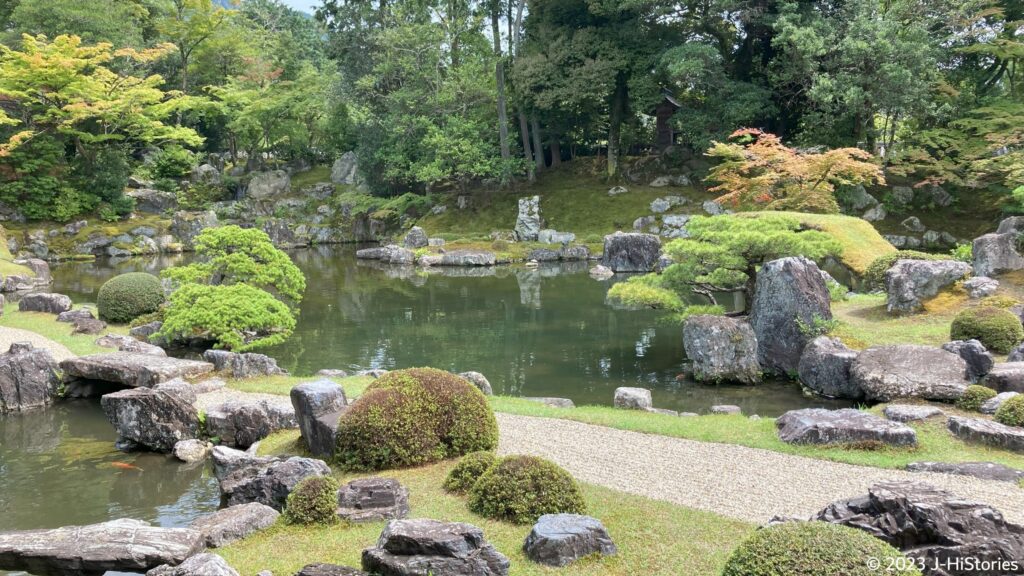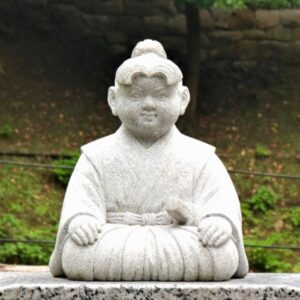Daigoji Temple, Cherry Blossoms Honoring Hideyoshi's Unification of Japan
Daigoji Temple, a World Heritage Site, has been known as "Hana-no-Daigo" (Cherry Blossom Flower Daigo) since the Heian period (794-1185), and some 700 cherry blossoms are in full bloom in spring, including weeping, Someiyoshino, mountain, and double-flowered cherry trees. The temple consists of several sub-temples and gardens spreading across a vast area of Mt. Daigo in southeastern Kyoto. The oldest five-story pagoda in Kyoto, a national treasure, fascinates visitors with its slender, standing form. In addition, Daigoji Temple has around 100,000 cultural items including many National Treasures and Important Cultural Properties. It is one of only four Kyoto gardens designated as a Special Historic Site and a Special Place of Scenic Beauty along with the Tenryuji, Kinkakuji, and Ginkakuji temples.

Unprecedented Cherry Blossom Viewing Party

On March 15th, 1598, Toyotomi Hideyoshi (1537-1598, 豊臣秀吉), the ruler of Japan, held a cherry blossom viewing party at the Daigoji Temple together with his heir, Toyotomi Hideyori (1593-1615, 豊臣秀頼) and about 1,300 ladies including his legal wife and concubines. For this, Hideyoshi had 700 cherry trees transplanted into the temple grounds in just 7 days, showing off his power as a ruler. You can imagine many ladies dressed up in gorgeous kimono, enjoying walking and chatting pleasantly under the cherry blossoms in full bloom.
Construction of the Best Garden for Emperor Goyozei

Not long after the party on April 7th, Hideyoshi started rebuilding the garden of Sanboin, the main house for the head priest, to accommodate the visit of the 107th Emperor Goyozei (1571-1617, 後陽成天皇) in the following year. Emperor Goyozei granted Hideyoshi the “Toyotomi” clan name. Hideyoshi installed a great stone called Fujito-ishi, previously owned by men of power, including his lord, Oda Nobunaga (1534-1582, 織田信長). The garden features plenty of beautifully balanced elements and has an aura reflecting the gorgeous atmosphere of the period. A pond in the center has two tiny islands, Tsurushima and Kameshima, with Japanese white pine trees designed to resemble a crane and a tortoise. There are also several large stones and a three-tiered waterfall. The white sand in front of the pond represents the flow of the Kamo River running through Kyoto.

The black-lacquered Karamon gate (a National Treasure) exudes a spectacular gorgeousness decorated with gilded chrysanthemums (the Imperial Family crest) and paulownia (a crest granted by the Imperial family to the Toyotomi Clan). However, Hideyoshi looked forward to Emperor Goyozei's visit, but his wish was not fulfilled and he died at the age of 61.
Daigoji Priest and His Brother Supported Hideyoshi to End the Warring State Period
Considering the deep relationship between Hideyoshi and Daigoji Temple, it is understandable that Hideyoshi held a grand cherry blossom viewing party here during his last days, inviting only his close relatives. Nijo Akizane (二条昭実), a brother of the head priest Gien (義演), relinquished his title of Kanpaku (chief advisor to the emperor) to Hideyoshi, although until then, only members of the five ruling houses of the Fujiwara clan could become Kampaku. Hideyoshi returned the favor by financially supporting the reconstruction of the Daigoji Temple after it was devastated during the Warring States period (1467-1590). After assuming Kanpaku, Hideyoshi could unify the nation under the emperor's authority in 1590, when the Hojo clan surrendered Odawara Castle. This was the moment when the 123-year Warring States period that began in 1467 finally came to an end.
The blossoming Cherry Trees honor Hideyoshi’s accomplishment of national unification through decades of battle and becoming the ruler of Japan. Hideyoshi had 121 wins, 18 losses, and 1 draw in 140 fights over 40 years. Please come and visit the Daigoji Temple and enjoy walking under the beautiful cherry blossoms in full bloom. The red leaves at the Sanboin garden in autumn are another spectacular sight.
Toyotomi Hideyoshi Timeline
| 1537 | Hideyoshi was born in Nagoya | Age=1 |
| 1554 | Hideyoshi started to work under Nobunaga | 16 |
| 1582 | Nobunaga was killed at Honnoji by Akechi Mitsuhide | 45 |
| 1582 | Hideyoshi defeated Akechi Mitsuhide | 45 |
| 1583 | Hideyoshi started to build Osaka castle | 49 |
| 1584 | The battle of Komaki Nagakute between Hideyoshi and Ieyasu | 50 |
| 1585 | Hideyoshi was appointed to Kanpaku | 51 |
| 1590 | Hideyoshi unified the nation | 53 |
| 1598 | Osaka castle was finally completed | 61 |
| 1598 | Hideyoshi enjoyed the cherry blossom viewing at Daigoji Temple | 61 |
| 1598 | Hideyoshi passed away | 61 |
Recommendations to visit
- Access: 30 minutes from Kyoto Station. Take Keihan Bus at Hachioguchi and get off at Daigoji. A 10-minute walk


